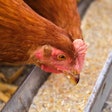Safe grain, sustainability top priorities for Thai Feed Mill Association
In April, I made my first trip to Bangkok to attend VICTAM Asia, this year’s largest Southeast Asia exhibition for animal feed production technology. During my visit, I had the opportunity to chat with representatives from the Thai Feed Mill Association (TFMA) about the critical issues facing Thai agriculture and its feed industry. With 51 member companies, the private nonprofit has been working “to develop collaboration among the livestock sectors in Thailand” since 1978.
“Currently, Thai feed production has a lot of good news – especially for the broiler sector,” reports Boontham Armsiriwat, TFMA’s secretary general. To date, broiler production represents 40 percent of the sector and exhibits growing export potential.
In Thailand, the animal feed sector accounts for 95 percent of production; aquafeed makes up the other 5 percent. Under normal circumstances, aquafeed would account for 10 percent of production, but in 2013, EMS impacted half of the country's crop.
In 2013, the country produced 15.5 million metric tons of compound feed. In 20 years, TFMA estimates the figure will grow by 100 percent. However, to get there, a shift in Thai agriculture will need to take place.
INGREDIENT CHALLENGES
From a raw material standpoint, Thai agriculture produces an ample amount of energy and carbohydrate sources, but is insufficient with protein sources – specifically soybeans. In Thailand more than 20 years ago, soybean production was 500,000 metric tons; today, it grows less than 100,000 metric tons and imports 4 million metric tons of soybeans and soybean meal.
“This is a risky problem,” explains TFMA president Pornsil Patchrintanakul. “If something happens in United States, Argentina or Brazil, the Thai feed industry is vulnerable. We must secure [Thai soybean production] – increase it by at least 10 to 15 percent – or make an agreement with the United States for a constant supply.”
Acknowledging soybeans will always be the best protein source, Armsiriwat notes that researchers are trying to find suitable alternatives by testing feed additives to improve the raw material efficiency of indigenous crops.
“We’re looking at local ingredients, but these all have a low protein,” he says. “Maybe with technology, they can be developed to have better protein value.”
In Patchrintanakul’s estimation, the country must increase soybean production by 15 to 20 percent to secure its supply stability.
GRAIN QUALITY
The safety of the grain supply is a pressing concern in the Thai feed industry.
“We’re still trying to improve the production chains – starting from grains to finished product,” says Patchrintanakul. “On the grain side, we need to learn how to produce and store safer grains by reducing the mycotoxins.”
In Thailand, maize is grown during the dry season and “rests” during the rainy season.
Patchrintanakul explains: “It is easy for mold to grow and generate aflatoxin – 60 percent of production is in the rainy season. If we delay the planting season, it will improve the yield and reduce the mycotoxin risk. I think we need a lot of education and compensation – maybe subsidies. This is one of the main problems and it's unlucky the surrounding countries have the same problem. If we succeed doing this we may need to cross the country to tell Myanmar what we’ve learned so in the future we grow a greater quantity of maize.”
Thailand grows up to 6 million tons of maize annually; it only imports 2 to 5 percent. Some years, it exports its surplus; TFMA predicts it will export more in the future.
“Once we have the quality or qualified raw materials, we can expect the meat industry to grow as well,” Patchrintanakul says. “We’re not only responsible for the feed, we’re responsible for the food up the chain – safety is a top priority.”
SUSTAINABILITY
Similar to other developing countries, Thai agriculture has expanded without controls in place, noting the country has natural resources shortages, like access to clean water. It is estimated that Thai agriculture must grow by 100 percent, a challenge TFMA says will only be met with technology and good agricultural practices.
“We can’t use the conventional way to grow raw materials anymore,” Patchrintanakul says. “We do not need a bigger piece of land; we need more efficient growth in raw materials and how we’re going to manage our farms in the same area to increase the quantity.”
Patchrintanakul feels Thai agriculture must work closely with the government and academia because private industry alone will be unable to manage all of the facets of sustainability.
AUTOMATION HOLDS KEY TO FUTURE
Technology isn’t limited to seed and equipment. Thailand has an aging farmer population and it has trouble finding workers: “We’re losing the young farmers.”
Succession and resource planning will continue to be a greater issue in the near future.
“The farm industry is changing,” Patchrintanakul says. “We must increase production using the same amount of labor. We cannot avoid the technology; we need to engage the technology and import it.”
In addition, as the cost of production grows due to rising labor costs, Thai feed mills will have the incentive to invest in more automation.
“We realize the labor will be short and we can’t expect we’ll have farm labor, so we need to factor in technology and machinery,” he says.
For more information about TFMA, visit www.thaifeedmill.com
















